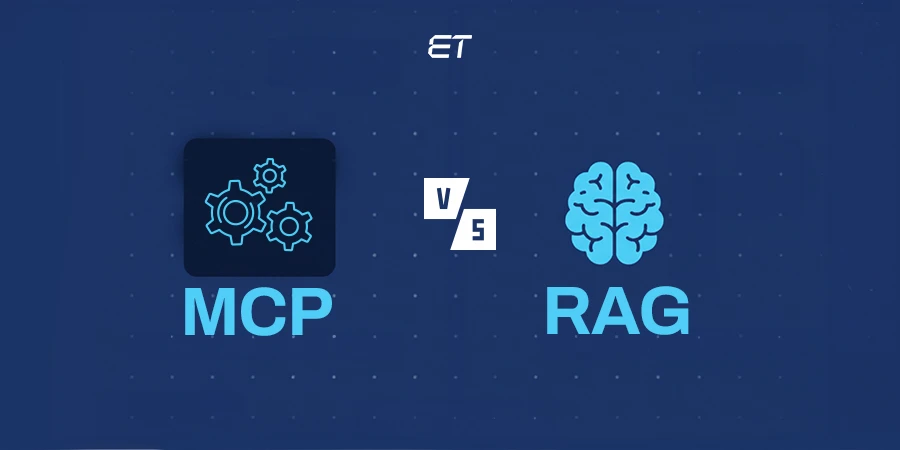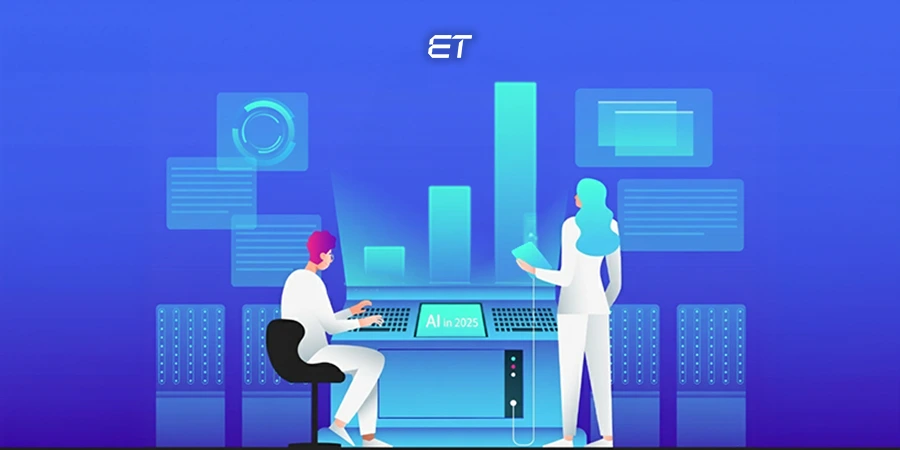
Agentic AI vs Generative AI: The Next Evolution in Enterprise Intelligence
What if your AI did not just respond but actually thought, decided, and acted on its own?
Imagine an intelligent system that prepares your quarterly report, routes it to department heads, tracks feedback, and updates your dashboards, all without a single prompt.
This is the reality of Agentic AI, the next strategic evolution beyond Generative AI, where intelligence shifts from creation to execution.
Generative AI has already transformed enterprise workflows by enhancing speed, creativity, and efficiency. According to McKinsey’s Global AI Report, generative AI could add up to $4.4 trillion to the global economy annually.
Yet, as enterprises adopt AI at scale, leaders are already looking beyond generation to goal-oriented intelligence. The question is no longer “What can AI create?” but “What can AI accomplish?”
Enter Agentic AI, systems that can reason, plan, and act autonomously across business environments. From CRMs and ERPs to cloud operations, Agentic AI shows how enterprises are becoming autonomous execution engines.
But this transition isn’t without challenges; 86% of enterprises expect heightened governance, compliance, and ethical oversight needs.
What is Generative AI?

To understand Agentic AI vs Generative AI, we must first explore the foundation of Generative AI. Generative AI marks a fundamental shift in how enterprises create, innovate, and operate. Unlike traditional automation that executes pre-programmed logic, generative AI learns from massive datasets. It produces new and original outputs, whether text, images, software code, designs, or even video.
It does not just replicate information; it generates content that never existed before, unlocking new efficiencies and innovation pathways.
Tools such as ChatGPT, Claude, Gemini, and Midjourney have defined this new era of enterprise transformation, enabling organizations to scale creativity, accelerate content and development pipelines, and introduce entirely new business workflows.
How Enterprises are Using Generative AI
Agentic AI vs Generative AI showcases how enterprises are redefining their workflows. Generative AI is reshaping core business functions, enhancing productivity and fueling data-driven innovation across industries:
- Marketing and Communications: Enterprises use AI-powered copywriting, campaign ideation, and content personalization to shorten production cycles and scale brand messaging globally.
- Software Engineering: Intelligent code suggestions, automated debugging, and instant documentation are redefining development speed, accuracy, and agility.
- Customer Experience: AI-driven chat assistants and conversational platforms provide consistent, always-on support and are improving service quality while lowering operational costs.
- Design and Advertising: Visual synthesis tools now empower design and product teams to rapidly prototype, visualize ideas, and iterate creative assets at unprecedented speed.
A recent McKinsey Global Institute insight summed up the enterprise perspective perfectly:
“Generative AI creates; it doesn’t act. It generates responses; it doesn’t decide.”
That’s where the evolution of Agentic AI vs Generative AI begins, the shift from creation to execution.
This realization highlights the next frontier: enterprises moving beyond creation to decision intelligence.
Generative AI helps you create faster, but execution still needs a human touch. Empower your developers to co-build with AI that generates, iterates, and improves code quality in real-time.
What is Agentic AI?
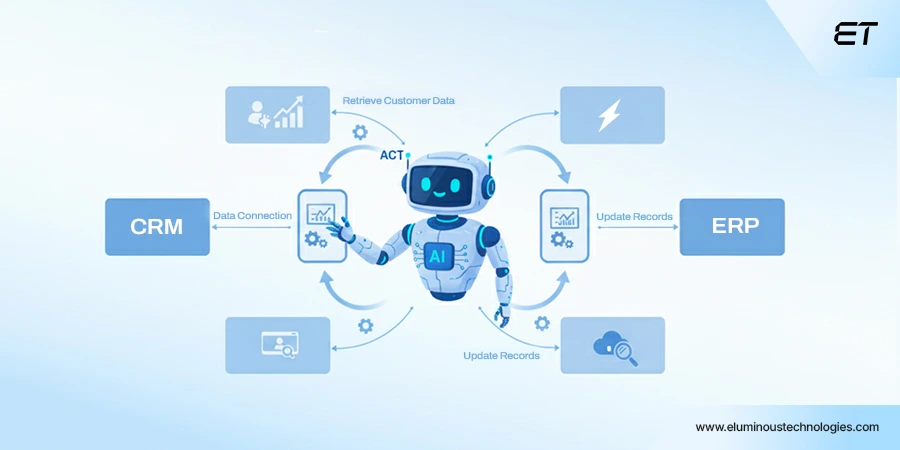
When comparing Agentic AI vs Generative AI, the biggest distinction lies in autonomy. Agentic AI represents the next evolution in enterprise intelligence, moving from content generation to autonomous action and decision-making.
While Generative AI produces outputs based on user instructions, Agentic AI goes a step further. It is goal-driven, capable of reasoning, planning, and executing complex, multi-step tasks end-to-end, all with minimal human intervention.
Think of it as the shift from asking, “What should I create?” to delegating, “I’ll create, test, deploy, and optimize, automatically.”
Agentic AI systems are not confined to generating language. They actively interact with real-world environments.
It easily integrates with enterprise ecosystems, including software tools, APIs, CRMs, ERP systems, and data lakes, to achieve defined business objectives in an intelligent, dynamic way.
This is why enterprises are increasingly adopting Agentic AI vs Generative AI strategies to scale intelligent operations.
How Agentic AI Transforms Enterprise Operations
In an enterprise context, Agentic AI acts as a self-directing digital workforce. It is capable of performing cognitive, analytical, and operational tasks autonomously. For instance, an AI agent could:
- Optimize Sales Campaigns: Analyse live CRM data, segment audiences, schedule campaigns, and fine-tune them for maximum ROI.
- Deliver Market Intelligence: Continuously research industry trends, extract key patterns, and summarize strategy-ready insights for leadership.
- Enhance Software Reliability: Detect, resolve, and validate code vulnerabilities through iterative testing and automated deployment.
- Re-engage Customers: Identify lost leads, personalize offers, and execute outreach sequences —all without human intervention.
The Cognitive Framework Behind Agentic Systems
Unlike generative models that respond to prompts, Agentic AI operates on intent, context, and continuous learning loops. The architecture of Agentic AI vs Generative AI systems differs across three critical layers.
It uses advanced reasoning frameworks such as ReAct (Reason + Act) and Chain of Thought to plan, decide, and adapt in real time.
This marks a defining moment for enterprises is the transition from AI as a creative assistant to AI as an autonomous collaborator, driving execution, optimization, and innovation at scale.
Learn how frameworks like LangChain, AutoGen, and CrewAI simplify the development of AI agents. Want to know more about Agentic AI Frameworks?
Understanding the Core Difference: Agentic AI vs Generative AI
As enterprises adopt AI across departments, understanding Agentic AI vs Generative AI becomes critical to shaping their digital maturity roadmap. While Generative AI and Agentic AI are closely related, their core distinction lies in intent and autonomy. Generative AI creates; Agentic AI acts. The latter transforms enterprises from manual orchestration to self-optimizing, autonomous operations.
| Element | Generative AI | Agentic AI |
| Core Function | Generates new content or data based on provided input. | Executes tasks and achieves defined goals through reasoning, planning, and environmental interaction. |
| Human Dependency | Highly dependent on human prompts, oversight, and direction. | Operates with minimal supervision; functions independently once objectives are defined. |
| Output Type | Static outputs such as text, images, videos, or code snippets. | Dynamic outcomes with completed actions, decisions, and workflow results. |
| Cognitive Framework | Relies on predictive generation using pre-learned data patterns. | Uses contextual reasoning, multi-step decision-making, and continuous feedback loops. |
| Integration Scope | Primarily used in isolated applications like content creation, analytics, or chat interfaces. | Deeply embedded within enterprise systems such as APIs, CRMs, ERPs, and automation platforms. |
| Example Scenario | Generates a marketing email draft for human review. | Plans, sends, tracks, analyses, and A/B tests email campaigns autonomously for optimal performance. |
Generative AI is like the creative engine of an enterprise.
Agentic AI, however, is the operator that turns creativity into continuous, adaptive actions.
Curious about what really powers Generative and Agentic AI? Explore how the AI tech stack connects models and infrastructure for enterprise-ready intelligence. (Read Complete Guide)
Agentic AI vs Generative AI – Deep Dive of Architecture and Functioning
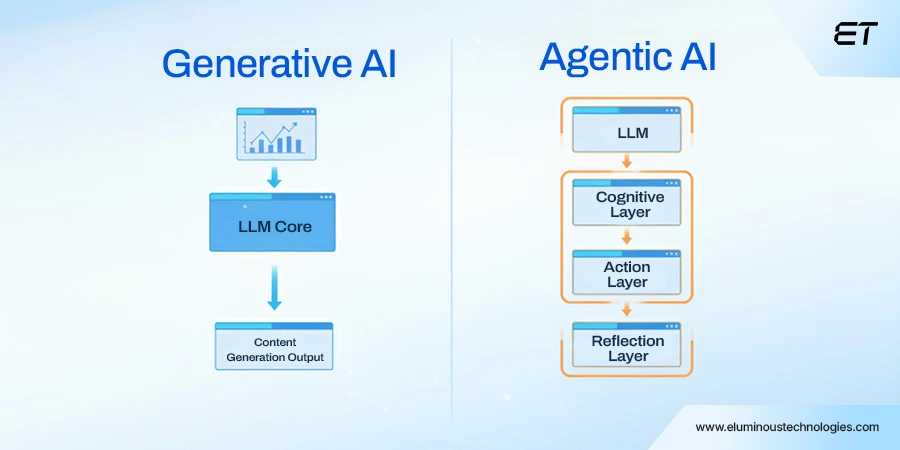
While Generative AI transforms how enterprises create, Agentic AI is redefining how they act.
Generative AI systems, powered by Large Language Models (LLMs), are designed to produce text, images, or code from human prompts, but their capabilities end once the content is generated.
Agentic AI, however, represents the next leap by extending the LLM foundation with layers that enable reasoning, autonomous action, and self-improvement.
It moves enterprises from automation to autonomy, shifting AI from a supportive tool to an independent digital operator.
1. Cognitive Layer (Planning and Reasoning)
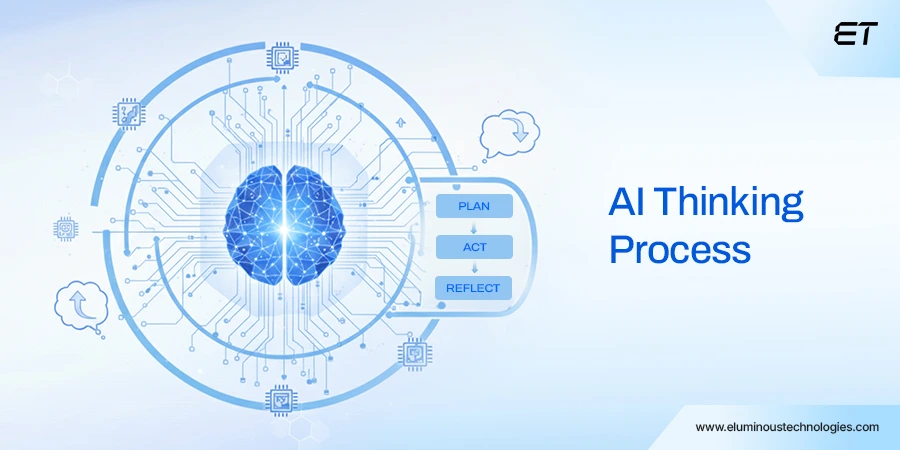
This layer forms the strategic core of an Agentic AI system.
It goes beyond simple prompt-response generation by understanding business objectives, planning execution paths, and dynamically adapting strategies.
- Functions: Interprets goals, formulates multi-step plans, and makes logical decisions in real-time.
- Techniques: Uses reasoning models such as ReAct (Reason + Act) and Chain-of-Thought prompting to simulate human-like planning.
Generative AI, in contrast, would only assist in creating marketing assets or summaries when prompted, without contextual understanding of business goals.
2. Action Layer (Tool and API Integration)
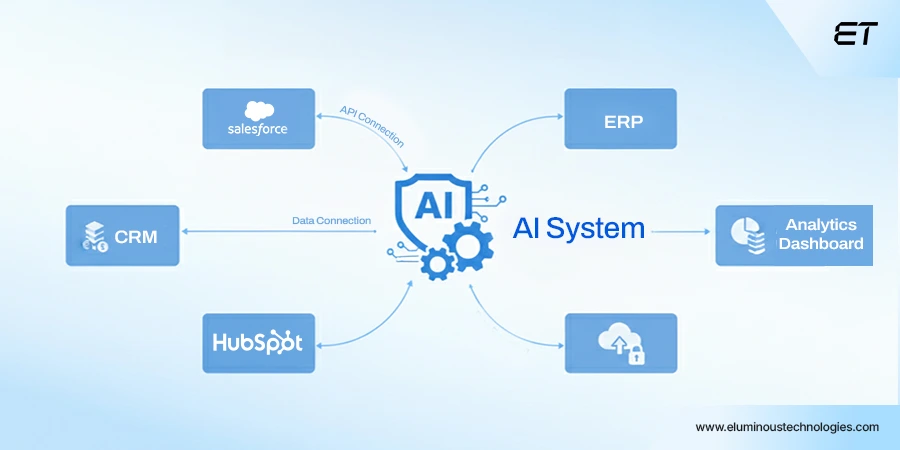
The execution engine of Agentic AI brings its plans to life by directly integrating with enterprise ecosystems.
- Functions: Connects seamlessly with CRMs, ERPs, cloud platforms, analytics dashboards, and communication systems.
- Capabilities: Executes logical operations such as retrieving information, triggering workflows, generating reports, updating databases, or launching campaigns.
Where Generative AI might draft a marketing email, Agentic AI could plan the email sequence, trigger the send via HubSpot or Salesforce, track open rates, A/B test variations, and automatically optimize future sends.
This real-time actionability turns enterprise AI from an assistant into an autonomous executor.
3. Reflection Layer (Self-Evaluation and Adaptation)
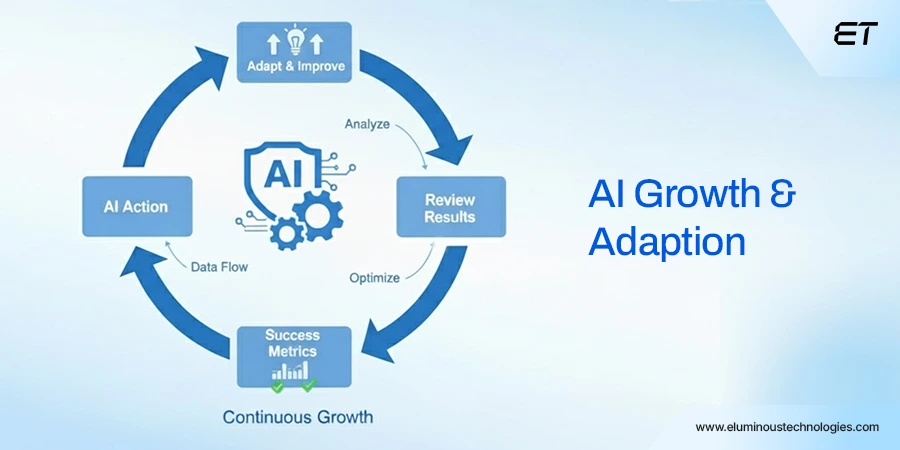
This layer enables continuous self-assessment and improvement — a hallmark of Agentic systems.
- Functions: Monitors outcomes, compares them against objectives, and refines its reasoning and actions accordingly.
- Mechanism: Uses reinforcement learning and performance metrics to learn from errors or inefficiencies.
For example, an AI agent managing a customer service pipeline could analyse unresolved tickets, detect recurring issues, and autonomously adjust workflows to improve first-response rates.
Generative AI, meanwhile, lacks this closed feedback loop; it can generate responses but not evaluate or optimize them post-execution.
Why This Matters for the Enterprise Executive: Agentic AI vs Generative AI
As enterprises shift toward hyper-automation, Agentic AI represents the next operational paradigm, not just generating insights but acting upon them.
It is the transition from “What should I create?” to “I’ll plan, act, and optimize autonomously.”
For CIOs, CMOs, and CTOs, the leap from generative to agentic intelligence defines 2025’s digital maturity frontier.
- CIOs must reimagine IT governance around adaptive automation.
- CMOs must shift content pipelines toward autonomous audience understanding.
- CTOs must integrate reasoning capabilities into existing AI architectures.
In the same way the cloud transformed data infrastructure, agentic AI will transform operational structure.
Adoption Framework – How Enterprises Should Prepare?
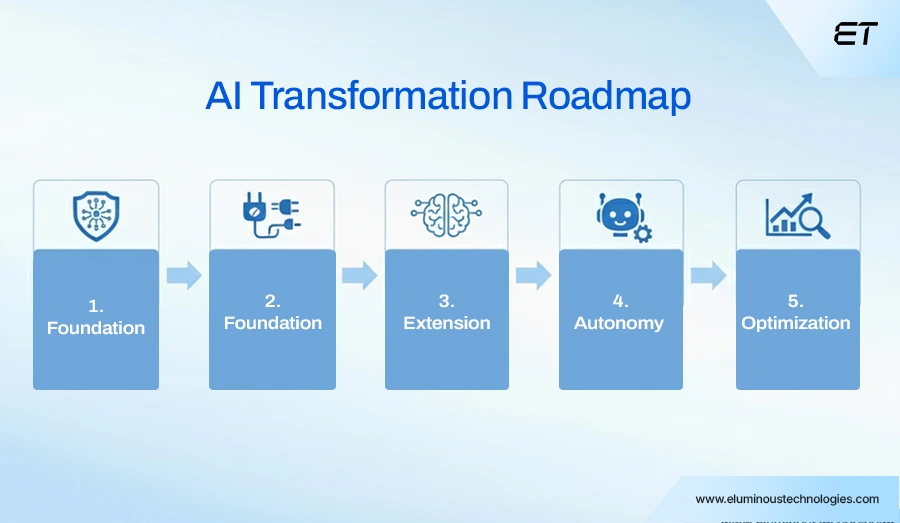
Transitioning from generative experimentation to agentic readiness is not an overnight leap; it is a strategic evolution.
Enterprises must move from prompt-driven creativity to goal-driven autonomy through a structured adoption journey.
To guide this shift, organizations can follow a five-stage adoption framework that ensures scalability, safety, and measurable ROI.
Stage 1: Foundation – Build AI Awareness and Governance
Enterprises should begin by deploying generative AI pilots across controlled use cases, such as content generation, code assistance, or document summarization.
Understanding LLM behavior, strengths, and biases helps. At this stage, the focus is on building AI literacy and ethical oversight.
According to Deloitte’s 2024 Enterprise AI Readiness Report, 78% of companies cite governance as the most critical prerequisite for scaling AI responsibly.
Stage 2: Integration – Connect and Contextualize
Once foundational understanding is achieved, the next step is integration and connecting generative systems with enterprise data and tools.
Ensure LLMs are enriched with contextual enterprise knowledge to improve accuracy and relevance. Also, introduce monitoring dashboards for visibility into usage and outcomes.
Stage 3: Extension – Introduce Agentic Capabilities
This stage introduces agentic orchestration layers that empower AI systems to plan and execute actions, not just generate responses. You can implement reasoning frameworks like ReAct or AutoGen for structured decision-making.
Stage 4: Autonomy – Enable Multi-Agent Collaboration
At this level, enterprises begin operating with multi-agent ecosystems, where systems plan, act, and evaluate together. AI agents collaborate across domains such as sales, operations, IT, and support to execute interconnected workflows.
Performance metrics shift from “output quantity” to “outcome quality,” measuring improvements in cycle times, cost efficiency, and operational precision.
Stage 5: Optimization – Drive Continuous Learning and Goal Orientation
The final stage transforms traditional prompt engineering into goal-oriented orchestration. Instead of instructing, enterprises now define objectives, and the AI determines how to achieve them.
For example, convert prompts like “Generate a campaign plan” into declarative goals such as “Increase engagement by 25% in Q4.” Establish AIOps (AI for IT operations) frameworks to monitor system health, governance, and adaptation.
This stage represents true Agentic maturity, where AI becomes a strategic collaborator that evolves alongside the business.
Data Governance and Trust Implications
With autonomy comes accountability.
Agentic AI vs Generative AI poses different trust challenges, Generative AI raised valid concerns around data bias; agentic systems now raise operational accountability questions: what happens when autonomous decisions go wrong?
Enterprises must reinforce frameworks for:
- Data lineage and explainability to trace agent decisions.
- Human-in-the-loop checkpoints for critical workflows (e.g., finance, compliance).
- Ethical boundaries to restrict decision-making control tiers.
Future success will depend on blending autonomous power with transparent oversight.
Whether you’re building generative systems or agentic architectures, security must evolve alongside intelligence. Explore practical strategies to safeguard your AI against modern threats.
Closing Perspective: Agentic AI vs Generative AI
Generative AI enabled enterprises to create faster. Agentic AI gives them the ability to achieve smarter.
The future of enterprise AI is not about replacing human contribution; it’s about amplifying human capability.
In tomorrow’s organizations, humans will define intent, and AI agents will execute with precision, together forming a seamless cycle of continuous intelligence, innovation, and growth.
In the next five years, businesses won’t ask, “How do we use AI to create?” They’ll ask, “How do we use AI to accomplish this?”
At eLuminous Technologies, we empower enterprises to lead this transformation.
From LLM-driven innovation to Agentic AI implementation, our AI software development solutions bridge the gap between automation and intelligence, helping businesses evolve from creating content to creating impact.
Ready to take your enterprise from generative to agentic?

